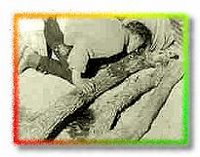

from our oath ceremony.....
New Americans......
went to hospital after the ceremony...hahahaha
Family Jovic Location:Camp Hill Family members: Sini Sladji Maki Neco Nationality: Serbian



 Otto von Bismarck, born on April 1, 1815 at Sch?nhausen, is considered the founder of the German Empire. For nearly three decades he shaped the fortunes of Germany, from 1862 to 1873 as prime minister of Prussia and from 1871 to 1890 as Germany?s first Chancellor. On the occasion of the 100th anniversary of his death on July 30, 1898, German News remembers the great German statesman. Prince Otto von Bismarck, portrait
Otto von Bismarck, born on April 1, 1815 at Sch?nhausen, is considered the founder of the German Empire. For nearly three decades he shaped the fortunes of Germany, from 1862 to 1873 as prime minister of Prussia and from 1871 to 1890 as Germany?s first Chancellor. On the occasion of the 100th anniversary of his death on July 30, 1898, German News remembers the great German statesman. Prince Otto von Bismarck, portrait e area of legislation. It exerted only a very small influence over the formation of governments and government policy. Characteristic of the Reich was the ?government over the parties" and the restriction of the peoples? representation to a position in which it was only able to express a non-binding opinion on important political questions. The system was described at the time as a ?chancellor dictatorship". It was Bismarck as Imperial Chancellor who decided upon policy outlines and who proposed the appointment and dismissal of state secretaries who were in turn responsible for the administration of the ministries of the Reich.
e area of legislation. It exerted only a very small influence over the formation of governments and government policy. Characteristic of the Reich was the ?government over the parties" and the restriction of the peoples? representation to a position in which it was only able to express a non-binding opinion on important political questions. The system was described at the time as a ?chancellor dictatorship". It was Bismarck as Imperial Chancellor who decided upon policy outlines and who proposed the appointment and dismissal of state secretaries who were in turn responsible for the administration of the ministries of the Reich. Bismarck was motivated to introduce social insurance in Germany both in order to promote the well-being of workers in order to keep the German economy operating at maximum efficiency, and to stave-off calls for more radical socialist alternatives. Despite his impeccable right-wing credentials, Bismarck would be called a socialist for introducing these programs, as would President Roosevelt 70 years later. In his own speech to the Reichstag during the 1881 debates, Bismarck would reply: "Call it socialism or whatever you like. It is the same to me."
Bismarck was motivated to introduce social insurance in Germany both in order to promote the well-being of workers in order to keep the German economy operating at maximum efficiency, and to stave-off calls for more radical socialist alternatives. Despite his impeccable right-wing credentials, Bismarck would be called a socialist for introducing these programs, as would President Roosevelt 70 years later. In his own speech to the Reichstag during the 1881 debates, Bismarck would reply: "Call it socialism or whatever you like. It is the same to me." Here something about Amish population in Lancaster area.
Here something about Amish population in Lancaster area. By some estimates, there are as many as eight different orders within the Amish population, with the majority affiliated with one of five religious orders - Old Order Amish, New Order Amish, Andy Weaver Amish, Beachy Amish, and Swartzentruber Amish. These churches operate independently from each other with differences in how they practice their religion and conduct their daily lives. The Old Order Amish are the largest group and the Swartzentruber Amish, an offshoot of the Old Order, are the most conservative.
By some estimates, there are as many as eight different orders within the Amish population, with the majority affiliated with one of five religious orders - Old Order Amish, New Order Amish, Andy Weaver Amish, Beachy Amish, and Swartzentruber Amish. These churches operate independently from each other with differences in how they practice their religion and conduct their daily lives. The Old Order Amish are the largest group and the Swartzentruber Amish, an offshoot of the Old Order, are the most conservative. I have had couple of requests about to explaine the name 'Nemanja', our oldest son. Here is a little story about King Stefan Nemanja after whom we named our son.
I have had couple of requests about to explaine the name 'Nemanja', our oldest son. Here is a little story about King Stefan Nemanja after whom we named our son. whaat obscure - even his year of birth and the actual identity of his father Zavida are both widely disputed - Nemanja nonetheless appears to have been at least indirectly related to the Raskan ruling family. Yet, the state institutions and subsequent spiritual legacy established by him and his sons marked such a break with earlier practices, that these (probably more so than uncertainties of his lineage) marked him as a founder of a brand new dynasty - indeed, one that was to become virtually synonymous with the glory of medieval Serbia.
whaat obscure - even his year of birth and the actual identity of his father Zavida are both widely disputed - Nemanja nonetheless appears to have been at least indirectly related to the Raskan ruling family. Yet, the state institutions and subsequent spiritual legacy established by him and his sons marked such a break with earlier practices, that these (probably more so than uncertainties of his lineage) marked him as a founder of a brand new dynasty - indeed, one that was to become virtually synonymous with the glory of medieval Serbia. er Jockovich for generous letter you wrote to us. I feel sorry I could not be there for our church celebration and do some photography, but....you'll understand. I explained and there is nothing I could have don
er Jockovich for generous letter you wrote to us. I feel sorry I could not be there for our church celebration and do some photography, but....you'll understand. I explained and there is nothing I could have don e. Sveti Sava, Serbian holiday is coming and I hope to be able to handle the task you gave me.
e. Sveti Sava, Serbian holiday is coming and I hope to be able to handle the task you gave me.
 Gregorian calendar.
Gregorian calendar.